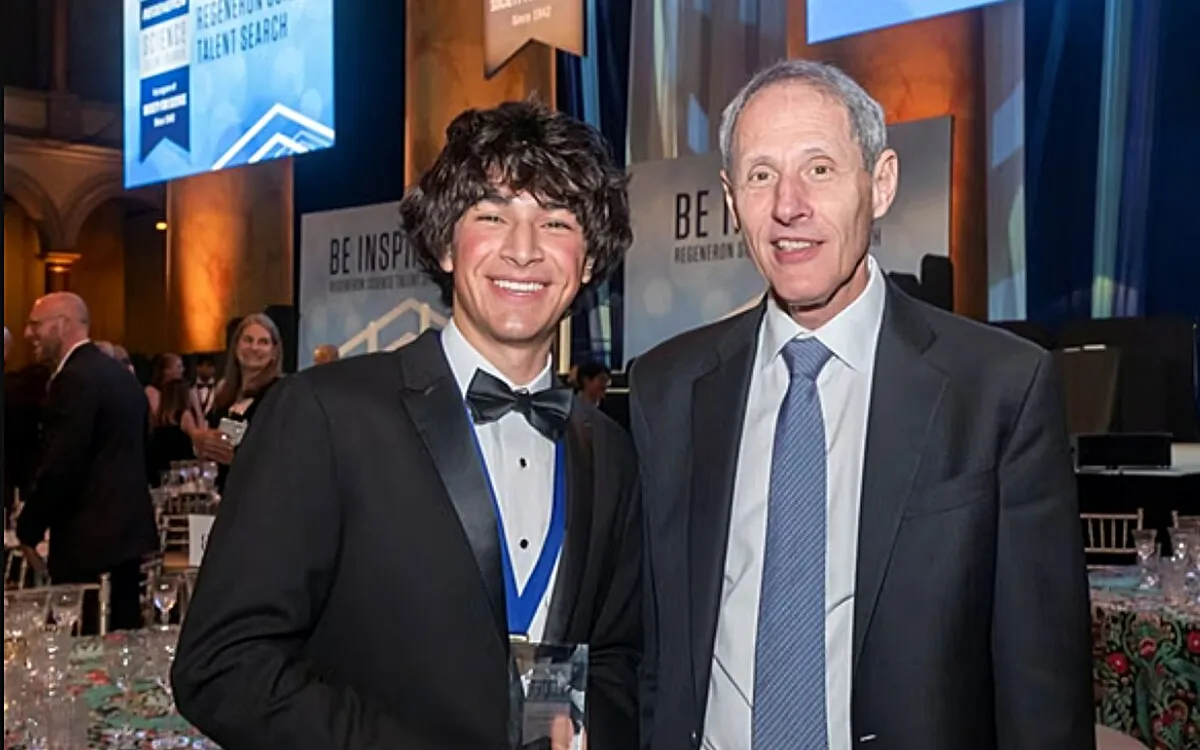
In an extraordinary achievement, Matteo (Matthew) Paz, a local high school student, has unveiled 1.5 million previously unknown objects in space through his groundbreaking research at Caltech. His findings not only broaden the potential of a significant NASA mission but also led to a published single-author paper in The Astronomical Journal. This remarkable work stems from a new AI algorithm developed by Paz, which can be adapted by fellow astronomers and astrophysicists for their ongoing research endeavors.
Paz’s fascination with astronomy began in his childhood when his mother took him to public Stargazing Lectures at Caltech. This early exposure ignited his desire to delve deeper into the universe. In the summer of 2022, he participated in the Caltech Planet Finder Academy, a program led by Professor of Astronomy Andrew Howard, where he studied astronomy alongside computer science.
Under the mentorship of Davy Kirkpatrick, an astronomer and senior scientist at IPAC, Paz found a guiding force to support his aspirations. "I'm so lucky to have met Davy," Paz reflected. "I remember the first day I talked to him; I mentioned my ambition to work on a paper, which was a much larger goal than six weeks of summer study. He encouraged me, saying, 'OK, let's talk about that,' which fostered an unbridled learning experience that contributed to my growth as a scientist."
Kirkpatrick, who grew up in a farming community in Tennessee, understands the value of mentorship. Inspired by his own ninth-grade chemistry and physics teacher, Marilyn Morrison, who guided him toward his dream of becoming an astronomer, he aims to provide similar support to budding scientists. "If I see their potential, I want to ensure they reach it. I’ll do whatever I can to help them out," Kirkpatrick stated.
Part of Kirkpatrick's initiative involved leveraging data from NEOWISE (Near-Earth Object Wide-field Infrared Survey Explorer), a now-retired infrared telescope that scanned the sky for asteroids and other near-Earth objects over a decade. While focusing on asteroids, NEOWISE also collected data on various distant cosmic objects exhibiting unique behaviors, such as quasars and exploding stars. However, the data on these variable objects had yet to be fully harnessed.
Kirkpatrick's vision was clear: "At that point, we were approaching 200 billion rows of data from every detection over the years. My goal was to analyze a small section of the sky to identify variable stars and highlight these discoveries to the astronomical community." He knew that the potential was immense, but the task required innovative approaches.
Paz, equipped with a strong academic background, did not intend to sift through vast amounts of data manually. His interest in artificial intelligence (AI), developed during an elective course integrating coding, theoretical computer science, and mathematics, prepared him for the challenge. With advanced math skills acquired from the Pasadena Unified School District's Math Academy, where students complete AP calculus BC in eighth grade, Paz set out to create a machine-learning technique capable of analyzing NEOWISE's extensive dataset.
Within six weeks, Paz drafted an AI model that showed promising results. Consulting regularly with Kirkpatrick, he deepened his understanding of relevant astronomy and astrophysics. "Every meeting with Davy is 10% work and 90% just chatting," Paz remarked. "It's been amazing to have someone to discuss science with in such a supportive environment."
Paz's collaboration extended to other Caltech astronomers, including Shoubaneh Hemmati, Daniel Masters, Ashish Mahabal, and Matthew Graham, who provided expertise on machine-learning techniques and the study of variable astronomical objects. They discovered that NEOWISE's observational rhythm limited its ability to systematically detect objects that either flashed rapidly or changed gradually over time.
As the summer program concluded, Paz continued refining his AI model, now capable of processing all raw data from NEOWISE’s observations. The advanced algorithms successfully flagged and classified an astounding 1.5 million potential new objects in the dataset. Plans are underway to publish a complete catalog of these variable objects in 2025.
Paz noted the broader implications of his work: "The model I implemented can be utilized for other time-domain studies in astronomy, and it could also apply to areas like stock market analysis, where information comes in time-series formats, or environmental studies focusing on atmospheric effects." As he balances finishing high school with his groundbreaking research, Paz has secured a position at Caltech, working with Kirkpatrick at IPAC, where he manages, processes, archives, and analyzes data from NEOWISE and several other NASA and NSF-supported space missions. This marks the beginning of his professional journey in the world of science.